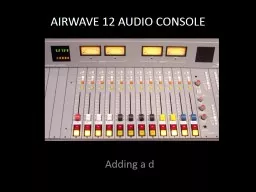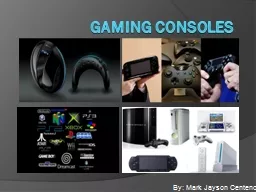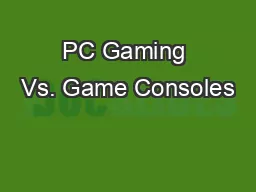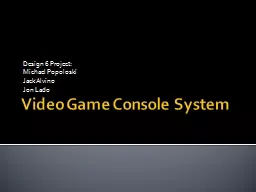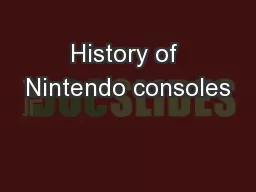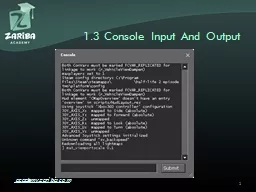PPT-History Of The Home Console
Author : olivia-moreira | Published Date : 2016-03-08
By Joshua Denobrega 1967 The Brown Box The first video game console working prototype debuted as a bulky rectangular brown wooden box with two attached controllers
Presentation Embed Code
Download Presentation
Download Presentation The PPT/PDF document "History Of The Home Console" is the property of its rightful owner. Permission is granted to download and print the materials on this website for personal, non-commercial use only, and to display it on your personal computer provided you do not modify the materials and that you retain all copyright notices contained in the materials. By downloading content from our website, you accept the terms of this agreement.
History Of The Home Console: Transcript
Download Rules Of Document
"History Of The Home Console"The content belongs to its owner. You may download and print it for personal use, without modification, and keep all copyright notices. By downloading, you agree to these terms.
Related Documents






